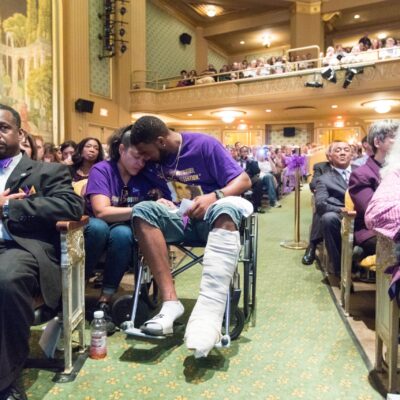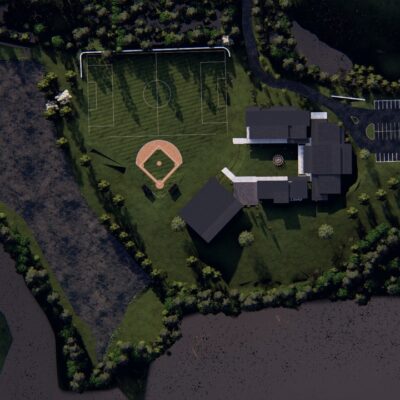Daniel Bluestone, a UVA professor of architectural preservation, wanted to make sure that the Compton House (most recently occupied by the Beta Theta fraternity), designed by acclaimed Charlottesville architect Eugene Bradbury, did not die in vain when it was bulldozed last month by the Thomas Jefferson Scholars Foundation for a grandiose new facility. So he brought city councilors a bit of pillage from the crumbled heap left behind by the backhoes.
“To prevent this kind of thing from happening in the future, I’d like to give each of you a paperweight, which is that extraordinary red tile roof that was on top of the Compton House,” said Bluestone, who earlier called the destruction of the house “an act of vandalism” that “we were all party to.” “Hundreds of thousands of dollars worth of roofing material that simply got smashed. Let’s reuse it as a paperweight and think about how to organize our preservation strategies in the city.”
 This pile of rubble could spell the beginning of a new round of historic preservation in the city. |
Later in the meeting, councilors got their chance to think about preservation strategies and decided that the city should preserve, well, a lot. Or to put it more accurately: Council decided that many more buildings’ fates should be closely considered before allowed to come down. The decision means that more buildings—potentially those 75 years and older, as well as selected younger structures—will receive protections that require permission the city before a demolition permit is granted. It would be the first large-scale protection of individual properties since 1993.
That means that you, Mr. Developer, could still tear down, say, four 100-year-old houses in 10th & Page to build a 40-unit project—so long as you convinced the city that your project will be worth more than the old homes you’re taking down.
“I heard unanimous support for these recommendations,” said Norris of the package of proposals brought forward by the city’s preservation planner, Mary Joy Scala, and no one objected. (Budget hawks should take note that the recommendations include a raise for members of the Board of Architectural Review (BAR), the body that would bear the brunt of the extra review.) Council wants more information before it decides whether to pick 75 years or 100 years as the cut off for automatic historic designation.
How soon any preservation actually gets passed depends on how quickly Scala can get her work done and back before Council. She’ll ask the BAR to weigh in on process, and then work to refine the list of properties to protect individually. The BAR and the Planning Commission would have to review what would be considered a rezoning before City Council made a decision. All affected property owners would have to be notified so that they could weigh in. At a minimum, it looks like six months—and probably more like a year—before all that could happen.
 The areas of the city already protected by local design control districts and those currently in discussion. |
Neighborhoods that wish to be protected wholesale through local control districts typically first get on the National Register of Historic Places, and then get go through rezoning hearings. Reps from the Martha Jefferson Neighborhood notified Scala in writing that the neighborhood wants to become a local district (it was approved for the National Register last month), and at the Council meeting, Woolen Mills resident Bill Emory said that his neighborhood was interested as well. Other neighborhoods slated for historic surveys, and possible local protection, include Fry’s Spring, Belmont, Starr Hill and 10th & Page.
But not all neighborhoods are lining up for preservation. Many Fifeville residents, for instance, have been adamant that they don’t want a local control district, despite the fact that at least nine homes more than 100 years old have been demolished since December 2005.
“I think we should work to try and make sure there’s a thorough discussion on this issue, because what disturbs me is the list of historic houses demolished in Fifeville,” said Councilor David Brown. “If we don’t want to see our neighborhood look a lot different, we need to have some tool to protect it.”
C-VILLE welcomes news tips from readers. Send them to news@c-ville.com.





